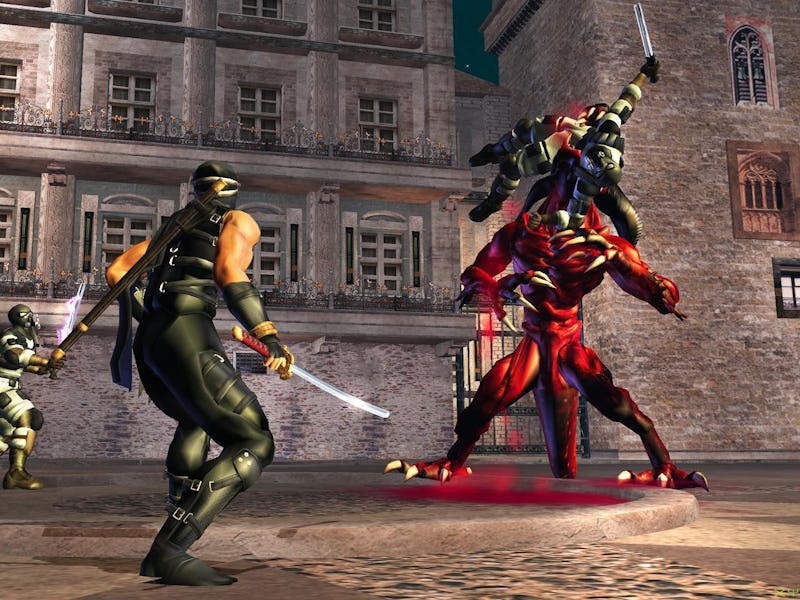How an Arcade Classic Became One of the Toughest Action Games Ever Made
Ultraviolence, thy name is Ryu Hayabusa.

In the early 2000s, if you were looking for a video game that championed flamboyant, lightning-fast combat, your best bet was Devil May Cry. But in 2004, a new challenger approached, trading dramatic aesthetics and showy action for a more demanding type of gameplay — one driven by the art of mastering combos while making split-second decisions on an ever-changing battlefield.
That game was Ninja Gaiden, a reboot of the already beloved franchise. But while earlier Ninja Gaiden games were classic side-scrolling beat ‘em ups from the arcade era of the ‘80s and ‘90s, developer Tecmo decided to try something new by pivoting to 3D hack-and-slash gameplay.
Released on March 2, 2004 as an Xbox exclusive, Ninja Gaiden pushed the entire genre forward while reviving a franchise that had been dormant for years. Here’s why Ninja Gaiden still matters 20 years after its release, and where the franchise might be going next.
Set in the same world as Tecmo’s Dead or Alive fighting game series, Ninja Gaiden follows Ryu Hayabusa, a stoic super-ninja on a quest to recover a relic called the Dark Dragon Blade that was stolen from his village. After being cleaved in half by the assassin Doku, Ryu is reborn as a “soldier of revenge” whose only objective is to reclaim the blade and avenge his clan.
Ryu’s mission leads him to Rachel, another victim of the merciless Doku. Rachel and her twin sister are both doomed to transform into monstrous “fiends” thanks to an evil blood curse. Rachel plays a major role in the plot of Ninja Gaiden, helping to move the narrative forward through conversations with Ryu that typically lead to epic boss battles.
Ninja Gaiden features a pretty solid plot by early 2000s standards, but the action is the main event.
Ninja Gaiden’s plot is pretty engaging, especially for an early 2000s video game, but the real focus here is the slick combat. Tecmo took full advantage of the shift to three-dimensional gameplay, crafting situations where Ryu needs to pull out every acrobatic stop to survive. This often means running up the side of a wall or some other obstacle to cleverly attack aggressive enemies.
Although the game can be defined as a classic hack-and-slash, there’s still plenty of strategy. Combos are the key to making your way through waves of relentless foes, meaning you’ll have to master various attacks that vary depending on the weapon you’re carrying. That may sound tedious, but it’s worth it to see Ryu vanquish hellish spawn by zipping around and slicing them to pieces.
Beyond the genre-pushing gameplay that allowed Ninja Gaiden to endure, there’s another reason why this 2004 title has stood the test of time. The graphics, though dated, are impressively adorned with a mixture of architectural influences ranging from Gothic stained-glass churches to hieroglyphics-branded catacombs. It’s flourishes like these that not only rebooted the franchise but ensured its future for years.
Rachel could take a leading role in the next Ninja Gaiden reboot.
In the two decades since 2004’s Ninja Gaiden, almost a dozen more sequels, spinoffs, and remasters followed, cementing the franchise as a true classic. And while it’s been a while since we got a new entry in the series, there have been recent murmurs that Ninja Gaiden could return once again.
As of 2021, producer Fumihiko Yasuda (who led development on the recent Ninja Gaiden: Master Collection) hinted that Team Ninja is considering a return to the series, but this time with a twist: a female-led game featuring multiple characters from the Ninja Gaiden and Dead or Alive shared universe — including Rachel. Nothing is confirmed yet, but in the meantime, there’s never been a better time to return to the 2004 classic and experience Ryu and Rachel’s epic story all over again.